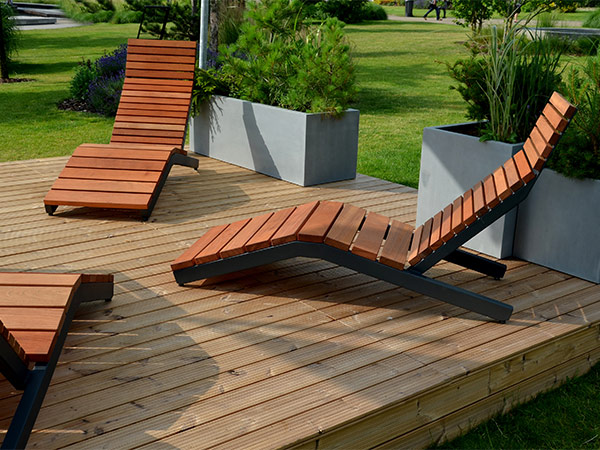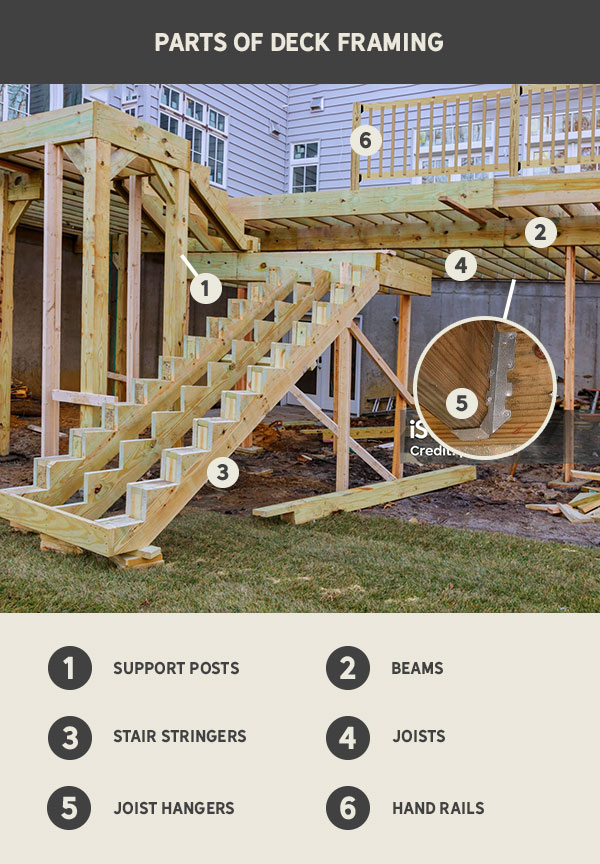

What You Need to Know Before Building a Deck

Building a deck in your backyard can lead to great BBQ memories or relaxing Saturdays with a good book. It can also lead to many questions. What materials should I use for my deck? Should it be freestanding? Whether you are building a deck yourself or hiring a professional, make sure you cover deck building basics before you begin to ensure a backyard oasis.
Check List Before You Begin Building
Building a deck can be a big undertaking, but a little planning will go a long way.

Assess the Property
First things first, check out the area where you want your deck to be built. Will it be a level deck or will it be graded? Does the area have good drainage? How will you access your deck? How do you plan to use it? Will you want shade or sun? Also, first story or second story? These are just some of the things to think about when picking a location. It’s best to create a list of what you expect to get out of your deck and try to match that to its location. After you have determined the best location, mark the area of your new deck, and contact your local utilities (water, gas, etc.) to ensure you won’t be disrupting any services to your home or the neighborhood.
Note: Make sure you are prepared to dig far enough down into the ground for the posts to be secured below the frost line to avoid them being pushed up by frost heave.
Free Standing Or Attached?
Another option to consider is whether a free standing or attached deck is best for your property. A free-standing deck holds its own weight without the help of another structure. An attached deck is connected to the home on at least one side. The existing structure helps bear the weight of the deck. Which one you chose is based on your preference. A free-standing deck creates less of a possibility the deck will cause damage to your home (like affecting its watertightness) but requires more materials to hold up the deck making it more expensive than an attached deck.
Code and Permits
A deck that is elevated off the ground and attached to your home usually requires a permit to ensure safety. The permit will need to be granted before any work begins. Check your local code for permits regarding freestanding decks. Keep in mind that permits do cost money and should be included in your final budget. If you are working with a pro, they will be able to help you navigate all the paperwork. All local area building codes must be followed and taken into consideration when planning a deck.
Decking Materials

After you have decided where your deck will be and what the layout will be, it’s time to determine materials. You have a few different options including traditional wood and composite and/or plastic decking.

Wood
Traditional wood decks offer a classic look and the option to paint or stain to fit your color preferences. Deck boards can be pressure treated wood to help prevent rot and insects. These will require regular staining and sealing to keep them looking their best. Cedar is a common wood type for decks as it is naturally resistant to rot and insects and easy to work with. Other wood types, such as Ipe, are a bit more exotic but can provide an upgraded look. Overall, wood decks are the most common decks as they are more-budget friendly.
Note: Coat your cuts! You will need to coat the ends of your wood boards that have been cut with a wood preservative to ensure protection against rot and wood boring insects.
Composite and Plastic
Growing in popularity, PVC plastic deck boards are rot-free and resistant to moisture. While this is the more expensive option, these boards require less maintenance as they come pre-colored, won’t splinter or crack (great for areas where you might walk barefoot), and are a great option if you live in an area where wildfires are a concern. A drawback is that they can be hotter than regular wood. Composite decking is a mix of recycled plastic and wood fibers that give the look of wood with less maintenance like PVC. These boards come already colored and don’t require regular staining, sanding, or sealing like traditional wood does.

Framing

The framing under your deck that holds everything together will need to be ground contact treated lumber to avoid rot and insect damage. PVC or composite deck boards are also an option. The basic materials used in deck framing include:
- Support posts are used to hold everything up and are installed vertically either below ground into concrete and backfilled with gravel or the post is attached to concrete footers above ground. Other posts can also be used to support an attached railing system with rails and balusters.
- Beams are usually made from 2x10 or 2x8 lumber fastened together and are installed horizontally over the posts. Exterior-grade LVL beams can be used.
- Joists are also installed horizontally but perpendicular to beams, and this is what the finished floor will sit on. Rim joists are boards that are installed horizontally along the perimeter of the deck.
- Blocking or bracing is put in between boards for support.
- A ledger board is installed to the side of the house after a section of siding has been removed to attach the deck to the home. Underneath the ledger board is flashing to ensure water and the elements can’t get in between the ledger board and the house to cause damage.
- Stair stringers are used to frame the stairs along with the risers or toe kicks (vertical boards in between steps) and the treads (what you step on).
Deck Fasteners
Decks require a variety of fasteners to hold them together. Here’s a list of some of the common types used in deck construction:
- Lag and carriage bolts are both galvanized fasteners used with anchors to connect lumber and are designed to support heavy loads.
- Rafter ties and joist hangers are galvanized fasteners that are used to secure beams, joists, and stair stringers.
- Anchor bolts are placed into concrete footers (if used) before they dry to later hold brackets to support posts.
- Post brackets hold in the posts on top of concrete footings (if used).
- Structural screws are used to hold lumber in place.
- Post caps are used to secure the beams to the posts.
- Decking screws or hidden fasteners are used to secure the decking to the frame.
Building Your Dream Deck
Need some more help planning? Check out our Simpson Strong-Tie deck planner to help you visualize everything you need from materials to design. Stop by McCoy’s for all things on decks including lumber, composite options, and all the power tools and fasteners to get the job done right. Our buy online and pickup in store options makes projects even easier so you can get back to building.
